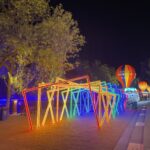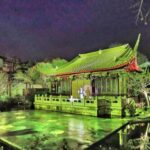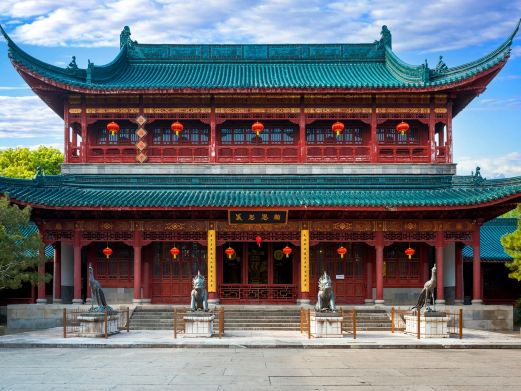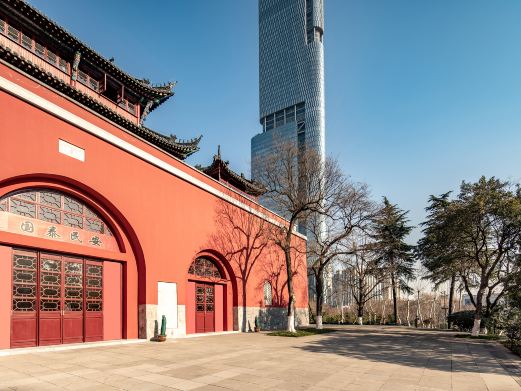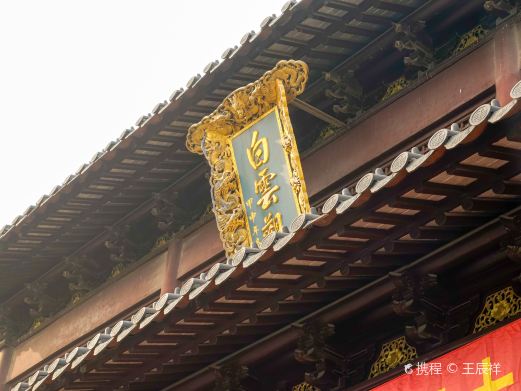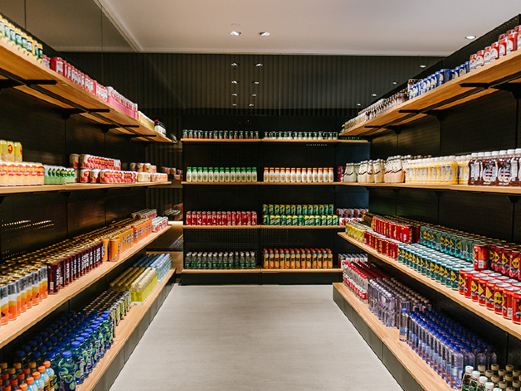Fengqiao Scenic Area is located on the Yunhe River to the west of the ancient city of Suzhou, with Fengqiao, Tieling Pass, Fengqiao Ancient Town, and the ancient canal (a section of the Beijing-Hangzhou Grand Canal) as the main attractions. Zhang Ji’s poem ‘Mooring at Night by Maple Bridge’ from the Tang Dynasty has drawn countless visitors to reminisce about the past and experience the ethereal atmosphere of listening to the bell from Hanshan Temple under the Maple Bridge. It is important to note that despite many claims that Fengqiao Scenic Area includes Hanshan Temple, these are two separate attractions with separate ticket sales.
Most of the area of Fengqiao Scenic Area is occupied by its subsidiary attractions, which are mostly located on the slender Jiangfengzhou, running north to south. Jiangfengzhou is connected to the mainland by a bridge, with Hanshan Temple to the east, separated by a narrow river. Tieling Pass and Hanshan Temple are on the same bank, with Maple Bridge, which is adjacent to Tieling Pass, located at the northwest corner outside Hanshan Temple.

South of Jiangfengzhou is a green belt, sparsely developed with several gardens and halls, while the north is Fengqiao Ancient Town, which is newly built in an antique style. There was indeed an ancient town here before, as it was the intersection of the canal and the ancient post road, attracting a large number of merchants and reaching unprecedented prosperity during the Ming and Qing dynasties before being destroyed by war. You can visit several exhibition halls in the town, including the Canal Transportation Exhibition Hall to see ship models, Jiangfeng Academy to see painting exhibitions, and Fengqiao Garden, where the miniature model ‘Fengqiao Scenic Spots’ recreates the prosperity of the Fengqiao area during the Ming and Qing dynasties.

Several bridges are also worth noting, such as the Jiangcunqiao near the Hanshan Temple’s mountain gate, a rebuilt ancient bridge from the Qing Dynasty, which is said to be the ‘Jiangfeng’ in the phrase ‘Jiangfeng fishing fire against sorrowful sleep,’ referring both to the maple trees by the river and to Jiangcunqiao and Maple Bridge. The wooden corridor bridge, Tingzhong Bridge, offers a great angle for photographing Maple Bridge and Tieling Pass.

Tie Ling Guan, originally constructed in the 36th year of the Jiajing era during the Ming Dynasty (A.D. 1557), stands as a relic of the anti-Japanese fortifications in Suzhou. The stone base of Tie Ling Guan remains an ancient structure from the Ming and Qing dynasties, with ivy covering it, as if narrating the mottled history. The pavilions on top are reconstructed in modern times. Visitors can ascend the narrow staircase to the top of the tower, from where they can overlook the ancient town of Fengqiao and gaze at the Puning Pagoda of Hanshan Temple.
Should you purchase a combined ticket for admission and the Pingtan boat tour, you can board the boat at the dock below Tie Ling Guan. The boat leisurely passes through the bridge holes, offering an experience reminiscent of the ‘arriving guest boat.’ Additionally, there are Pingtan performances on the boat. To reach Hanshan Temple, one can cross the antique street, Hanshan Temple Alley, which is filled with handicrafts, south of Tie Ling Guan and walk less than 100 meters to reach the temple’s entrance. Alternatively, crossing the Jiangcun Bridge on Jiangfengzhou, one can see Hanshan Temple from the bridge and it is just a short walk away. The scenic area is open all year round from 07:30 to 21:00. Parking facilities are available at the Fengqiao Parking Lot, with a reference price of ¥6 per hour, located at the end of Fengqiao Road, Gusu District, Suzhou City, Jiangsu Province, with a capacity of 50 spots.